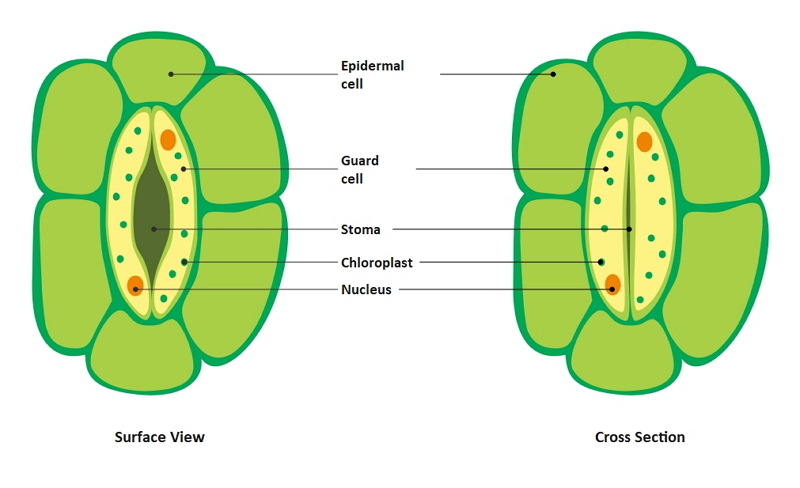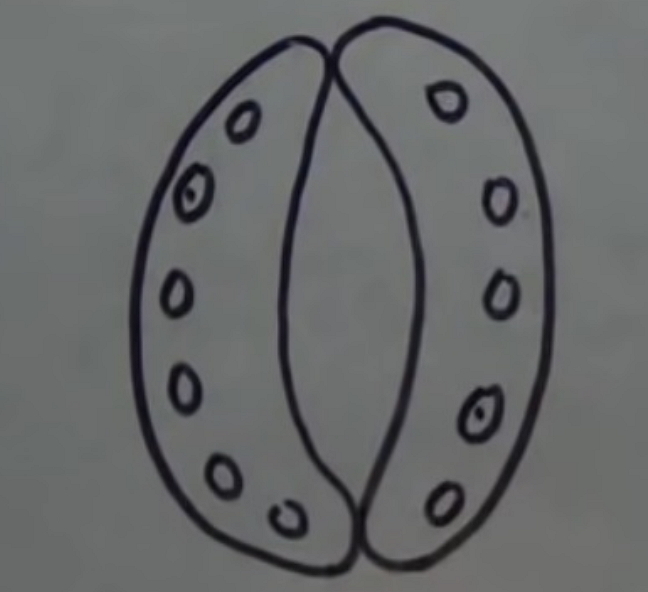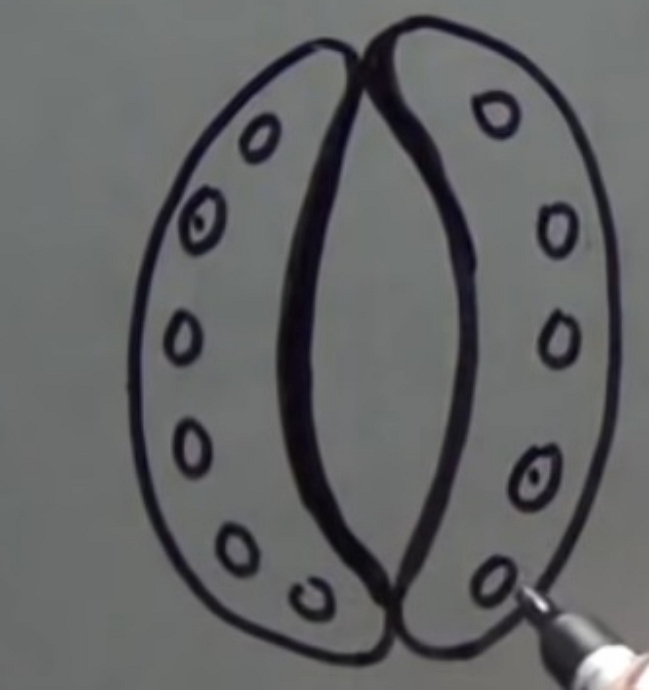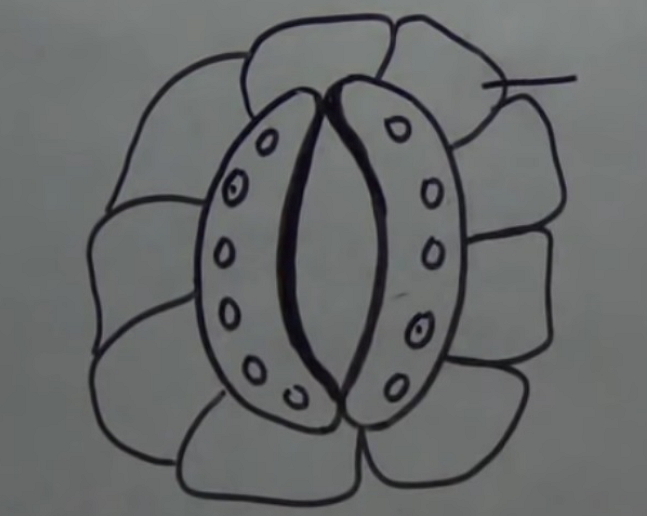A Guide to Understand Stomata with Diagram
The plants participate in photosynthesis, and for that, the gaseous exchange is a must. The stomata cells help in the gaseous exchange and transpiration. Hence to understand photosynthesis and transpiration, the students must learn about the stomata cells. For that, they need to use a stomata diagram. Drawing a stomata diagram by hand is challenging. Hence, the students must use the Edrawmax Online tool.
1. The Stomata
Trees are the primary producers in the ecosystem, and for that, they need to do photosynthesis. For photosynthesis, carbon dioxide is a requirement. Stomata participate in the gaseous exchange and oxygen, carbon dioxide, and diffusion of water vapor. They are present on the epidermis of the leaves, stems, and some other parts of the plants, except the roots.
They can stay on both the upper and lower surfaces of the leaves. Generally, when there is no light, stomata remain closed. While, during the daytime, the stomata remain open.

1.1 The Structure of Stomata
Epidermal Cells:
Epidermal cells are irregularly shaped cells and make the outermost layer of the plants. They are made from the dermal tissues of the plants. Their primary function is to provide mechanical support to the plant. The plants that grow above ground have Cutin. To prevent the excessive evaporation of the water, they are densely located and have a waxy layer of cuticle secreted by the cells.
Guard Cells:
The Guard cell has the shape of a bean or kidney and may also be dumbbell-shaped. The function of the stomata is the gaseous exchange. Hence there is a mechanism of opening and closing. The guard cells control this mechanism. They also maintain the transpiration rate to prevent excessive water loss. The guard cells are a combination of two cells that cover the opening of the stoma. Guard cells generally have a thicker inner wall when compared to their outer one.
- Stomatal Pore: Stomatal pores are tiny openings present under the surface of the leaves. They participate in the gaseous exchange of oxygen and carbon dioxide. They also prevent water loss in dry weather.
- Subsidiary Cells: The subsidiary cells are there beside the guard cells present in the leaf stomata. They primarily originate from the adjacent mother cell. However, in some cases, they can also form independently. The primary function of the guard cells is to provide mechanical support to the movement of the guard cells. They can also work as the storage of water and ions.
 Source:EdrawMax Online
Source:EdrawMax Online
1.2 The Functions of Stomata
The main functions of the stomata are:
- Gaseous exchanges:
- Water Evaporation:
- Water Balance:
They participate in the exchange of oxygen and carbon dioxide with the atmosphere. In the presence of light, the stomata open. When photosynthesis occurs, the concentration of carbohydrates increases and uptake of water occurs. As a result, the guard cells swell, and the inflow of water opens the stomata. At night, the osmotic pressure of the guard cells decreases, and the water goes to the nearby epidermal cells with higher cell sap having a higher concentration. Thus, leading the guard cells to shrink and close.
Stomata participate in the process of transpiration. Water gets transpired from the surface of the leaves in the form of vapor. It helps in maintaining a balance of water. For dicot leaves, there are more stomata on the lower surface than the upper surface. Hence, transpiration occurs at the lower surface of the leaves.
The stomata also help in maintaining the water balance in the plant. It depends on the climatic conditions and controls the opening and closing of the water. It prevents the tree from getting wilt in extremely dry or humid weather.
2. How to Draw the Stomata Diagram
The students can use a stomata diagram to understand the function of the whole stomatal apparatus and the cells present in it. The students can also get ideas about photosynthesis and transpiration.
2.1 How to Create Stomata Diagram from Sketch
The students can make a stomata diagram by hand. However, the process is lengthy and challenging. The students can follow these steps to create a stomata diagram by hand:
Step 1: The students need to draw two bean shapes facing each other while the concave sides are there, on the inside. These bean-shapes are the guard cells of the stomata. Now, they need to draw small circles on the convex side of the bean shapes.

Step 2: After that, they need to double-line the concave side and then shade them.

Step 3: They have to draw petals like rectangular structures on the outside of the bean shapes. These are the subsidiary cells.

Step 4: The blank part in the middle surrounded by the guard cells is the stomata.

2.2 How to Create Stomata Diagram Online
This process is time-consuming, and the students may fail to create a high-quality stomata diagram for their projects or lessons. To avoid such hassle, the students can use the EdrawMax Online tool. It is an easy-to-use tool that anyone can use without any prior experience. Here are a few simple steps which the students can follow to create a stomata diagram on the Edrawmax Online tool:
Step 1: To start with the process, the students need to open the Edrawmax Online tool. It is user-friendly, and the students can comfortably work on it. They need to open New and find the Science and Education section. In this part, there are multiple Science and Education related diagrams. Students can use them for their lessons.

Step 2: In the Science and Education part, the students can find the Biology option. They can look for the stomata diagram in this part and can modify the same per their choice. It can help them to create a high-quality image.

Step 3: After selecting the template they require, the students should modify it as per their choice. The tool gives the students some hassle-free options to edit their diagrams. They can work on those images according to their preference to create a high-quality stomata image.

Step 4: Once the student completes their stomata diagram, they can save it in different formats and export it to use it in their projects, lessons or dissertation papers.

3. The Classifications of Stomata
Based on the guard cells, nature, and the arrangement of the subsidiary cells, the stomata can be classified into five types:
- Anomocytic Stomata:
- Anisocytic Stomata:
- Diacytic Stomata:
- Paracytic Stomata:
- Gramineous Stomata:
This type of stomata stays embedded in epidermal cells. They have guard cells surrounded by epidermis cells of the same shape and size. The number of cells present in the arrangement is indefinite. This type of stomata is mainly noticeable in Boraginaceae, Cucurbitaceae, etcetera.
In this case of this type of stomata, the guard cell remains surrounded by three subsidiary cells. Among three of them, one is comparatively small in size than the other two. Solanaceae, Brassicaceae have this type of stomata.
The diacytic stomata has two subsidiary cells located perpendicularly to the guard cells. This type of stomata can be seen in Acanthaceae and Caryophyllaceae.
It has two subsidiary cells located parallel to the guard cells and stomatal pore. They can be seen in Rubiaceae, Fabaceae, etcetera.
The guard cells of this stomata are dumbbell-shaped and present at a parallel location with the subsidiaries. The guard cells have a narrow part in the middle while the ends are swollen.
4. Conclusion
he students can learn about the function of stomata to study the process of gaseous exchange in plants. To thoroughly learn about the stomata cells, the students have to use a stomata diagram. It is a complex process to create a stomata diagram by hand. Moreover, the students may fail to generate a good result. They must use the Edrawmax Online tool to create a high-quality stomata diagram without any hassle.
In conclusion, EdrawMax Online is a quick-start diagramming tool, which is easier to make stomata diagram and any 280 types of diagrams. Also, it contains substantial built-in templates that you can use for free, or share your science diagrams with others in our template community.



